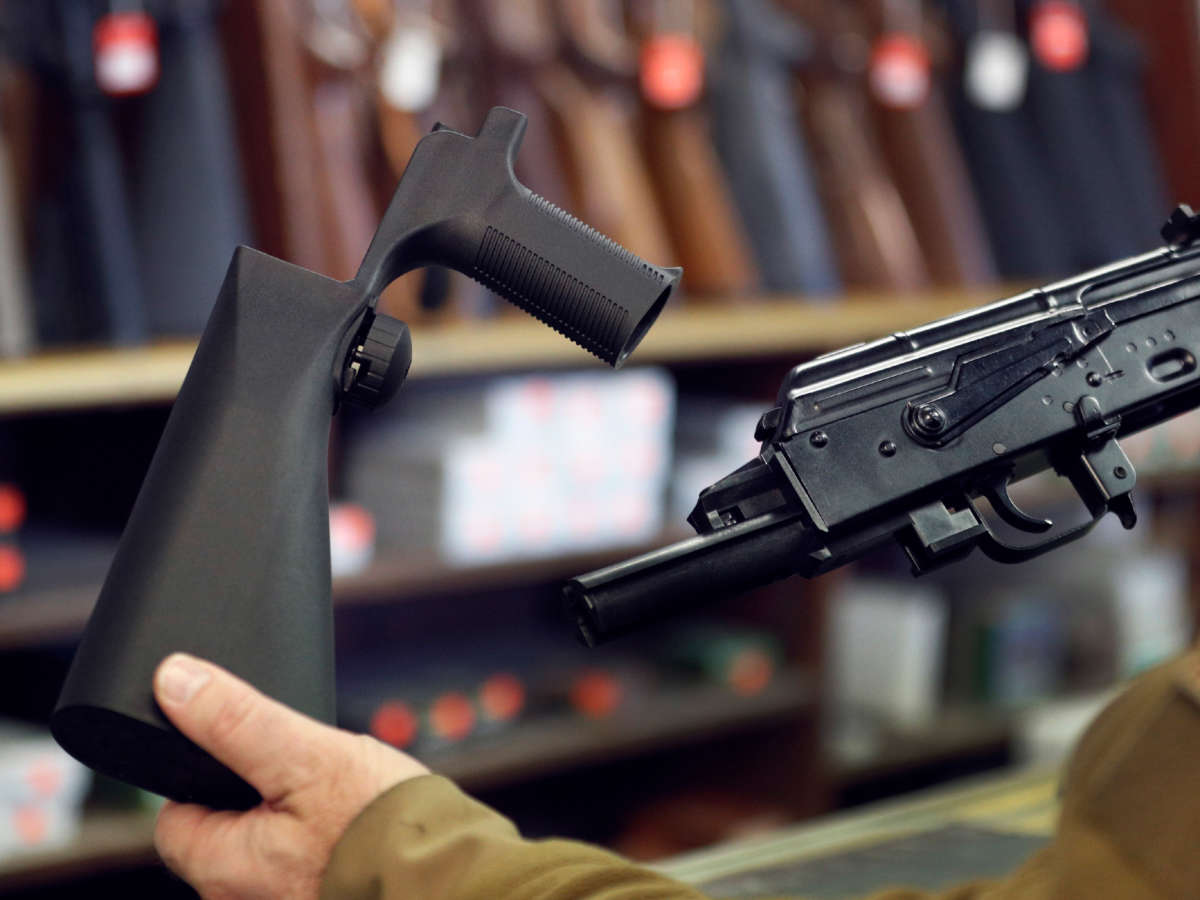On Monday, the U.S. Supreme Court rejected two challenges to a federal regulation banning the use of bump stocks, accessories to semiautomatic weapons that allow the discharge of several bullets every time the trigger is pulled (as opposed to just one).
The cases in question — Aposhian v. Garland and Gun Owners of America v. Garland — involved plaintiffs who had sued the federal government over changes the Department of Justice (DOJ) had made to the definition of machine guns, which are barred from common use and ownership in the U.S. save for very limited circumstances. The plaintiffs in those cases filed lawsuits on the grounds that the DOJ did not have the authority to redefine machine guns and therefore the regulation change was improper.
Appellate courts found that the alteration was not improper, however, and upheld the DOJ’s changes. On Monday, the Supreme Court refused to hear the challenges to those rulings, meaning that fewer than four justices on the Court believed either case was worth hearing.
The Court did not elaborate on why it refused the cases.
Neither of the cases asserted that plaintiffs’ Second Amendment rights to own weapons had been violated, meaning that a challenge on those grounds could come about in the future.
For the time being, however, the regulation change will stay intact, and bump stocks will remain illegal in the U.S. A person can face up to 10 years in prison for owning a bump stock, and be fined up to $250,000.
The decision to reject the cases has been celebrated as a win by gun reform advocates. It’s an unusual action for the far right Supreme Court, which late in its last term loosened gun laws in New York and several other states, ruling that laws requiring individuals to demonstrate a need to carry a weapon in public before getting a concealed carry weapon were unconstitutional.
The DOJ changes — which altered definitions within laws regulating how the Bureau of Alcohol, Tobacco, Firearms and Explosives (ATF) operates — were implemented following a 2017 mass shooting at a music festival in Las Vegas, Nevada, in which a gunman killed 58 people and wounded hundreds more as he opened fire from above in his hotel room. Following the shooting, then-President Donald Trump called for the agency to deem bump stocks illegal, despite his generally anti-regulatory viewpoints on guns.
The DOJ issued its final rule in December 2018, writing:
The term ‘machine gun’ includes bump-stock devices, i.e., devices that allow a semiautomatic firearm to shoot more than one shot with a single pull of the trigger by harnessing the recoil energy of the semi-automatic firearm to which it is affixed so that the trigger resets and continues firing without additional physical manipulation of the trigger by the shooter.
The policy went into effect in 2019.
Polling after the Las Vegas shooting showed wide support for a bump stock ban, though policy experts were unsure that such a ban would lessen gun deaths, especially in mass shootings, as the majority of mass shootings both before and after the Las Vegas massacre didn’t involve bump stocks. Meanwhile, the number of mass shootings this year is on pace to reach nearly the same levels as in 2017.


